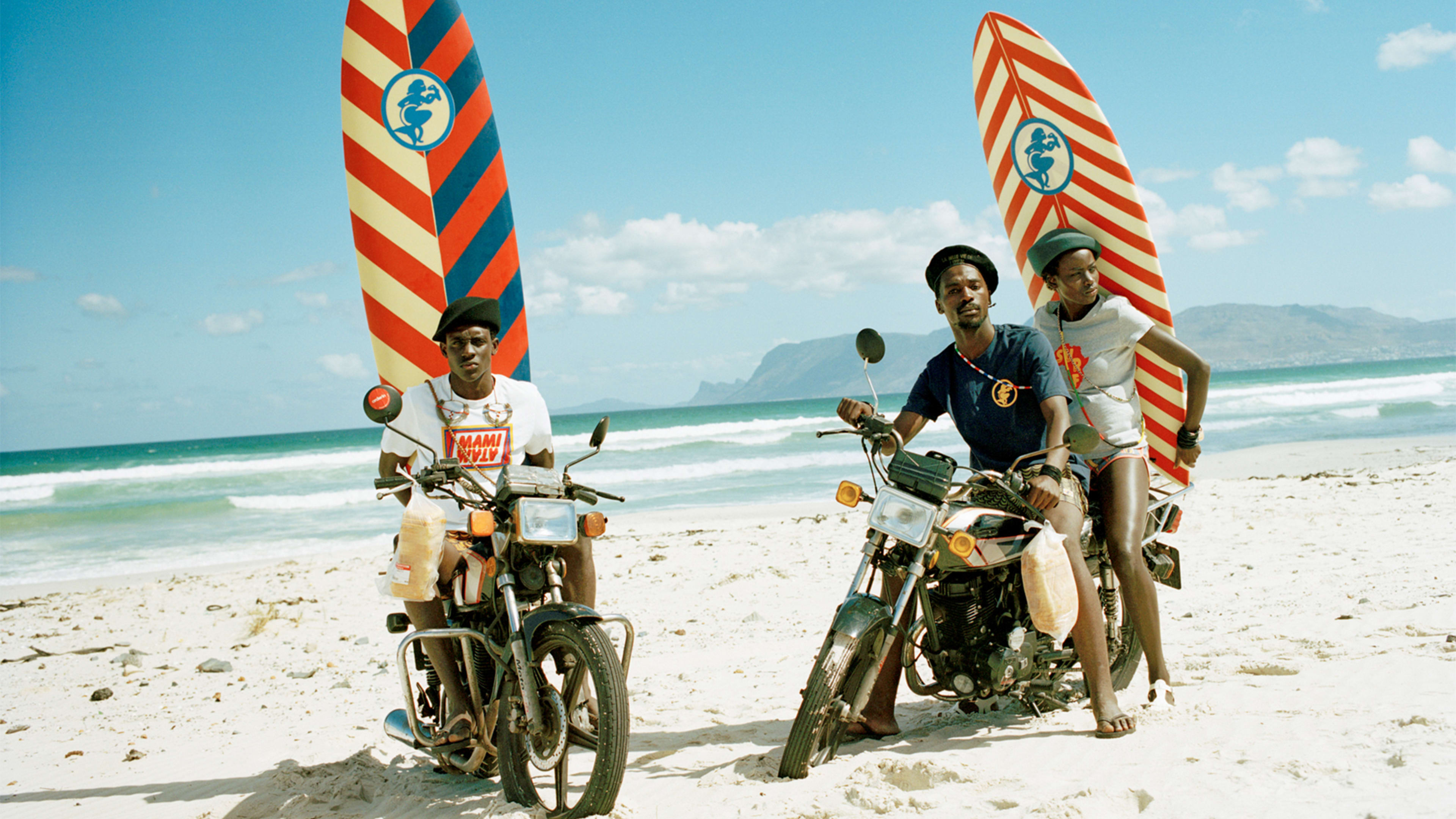As a child, my first introduction to surfing came from brands like Billabong, Quicksilver, Ripcurl, and Volcom, which set up shops in seaside towns everywhere I visited from Bali to Santa Cruz to Mauritius. Their stores were covered in images of blond-haired, blue-eyed surfers, suggesting to me that surfing was a pastime reserved for white people.
I wasn’t alone in feeling excluded from surfing. Peet Pienaar, a South African creative director and artist, has spoken to many Africans who felt just like I did. “People grew up with brands like Billabong, thinking they were cool,” he says. “Suddenly, when they got a little older, they realized these brands never represented them. They didn’t see themselves in this brand. And they don’t want their kids to buy into what these brands are selling them.”
In 2015, Pienaar joined forces with fellow South Africans Nick Dutton and Andy Davis to launch a new kind of fashion label, one that reflected the thriving world of African surf culture. They called the brand Mami Wata, a West African pidgin English term for Mother Ocean which, in local mythology, is a water spirit that appears in the shape of a mermaid. A few months later, Selema Masekela, a well-known surfer with both African-American and South African roots, fell in love with the brand and became the fourth co-founder. As Mami Wata launches in the United States later this month, the brand’s goal is not just to offer a more diverse vision of surfing, but to give the world insight into parts of Africa that don’t often get portrayed by the media.

A sport with ancient roots
Surfing has always been a diverse activity. Its roots go back centuries, where people in ancient Hawaii, Samoa, and Tonga developed the art of crafting boards that would allow them to crest waves. But in the early 1900s, Hawaiians introduced the activity to Americans and Australians, who quickly co-opted the activity. By the mid 20th century, American pop culture portrayed surfing as a largely caucasian activity, thanks to films like Gidget (1959) about a female surfer and songs like the Beach Boys’ “Surfin’ Safari” (1962). American and Australian brands like Billabong and Quicksilver reinforced this idea, with imagery that featured largely white models.
Today, even though there are many well-known surfers of color, from Sharon Schaffer to Michael February to Hunter Jones, the sport is still often perceived as catering to the white and privileged. Masekela remembers starting a new high school in Carlsbad, California, and confiding in a classmate that he wanted to surf. “He responded by saying, ‘You people don’t even swim, so how are you going to learn to surf?'” Masekela recalls. “I’ve been surfing for 30 years now and perception-wise, not much has changed at all.” Last year, amid the protests after George Floyd’s murder, surfers around the world drew attention to the sport’s history of excluding people of color.
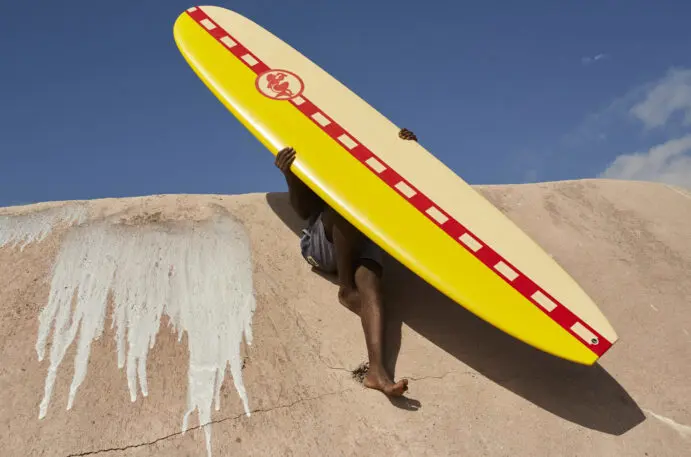
Brands shape perception
Nick Dutton was sitting on a beach in Cape Town six years ago when he noticed the contrast between the surfers on the beach and the brands that those surfers were wearing. “There are millions of people surfing in Africa and yet, there’s no African surf brand out there,” he says. “You’ve had generations of Africans growing up with a narrative of blond-haired, blue-eyed surfers, presented by surf brands. I felt like there was an opportunity to tell a different story about the creativity, design, and the deep history of surf going on in the continent of Africa.”
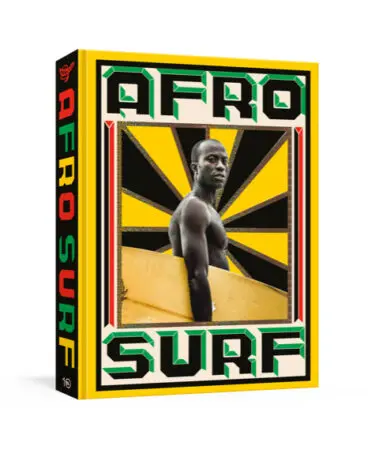
They began developing T-shirts, sweaters, shorts, hats, and surfboards that reflected the art and design of Africa. Pienaar, who serves as creative director for the brand, spent time studying African iconography and speaking with African designers as he developed the visual language of the brand. The clothes in the line are minimalist, with bright pop-art graphics that are tied to traditional African aesthetics. Images reference African mythology: There are crabs, which were used to predict the future, and birds, which represent the need to reflect on the past. Mami Wata herself is a symbol of fertility and a guardian of sea creatures. But you don’t need to understand the historic meaning of the image to appreciate the fun, vibrant aesthetic.
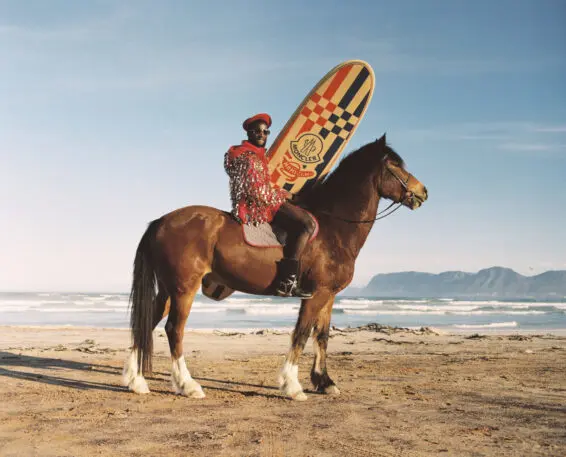
Projecting a positive image
Dutton and his co-founders believe that brands can do a lot to shape people’s perception of a country—or a continent. Dutton says that the rest of the world tends to only hear about the dark, negative stories about Africa. “They only talk about AIDS, poverty, and corruption, because it is what’s in the news cycle,” he says. “It’s not to say that that stuff isn’t happening, but what Africa lacks is brands telling the positive stories. People’s admiration for America has been partly defined by the trillion dollars American brands have spent talking about the positive attributes of the country like freedom and family. If what we know about America only came from what’s happening on the ground, we would have a different perspective.”
More broadly, he believes surfing has been a positive force in the continent. It drives tourism to the beaches of Ghana, Senegal, South Africa, and other countries, helping stimulate those economies. And Mami Wata partners with the organization Waves for Change that uses surfing as a form of therapy to help street children growing up in traumatic, challenging environments. “A lot of these children actually live next to the beach but they never swim or surf because they never had that as a reference point,” Dutton says. “These programs give them a sense of community and use surfing as a way to teach them life skills.”
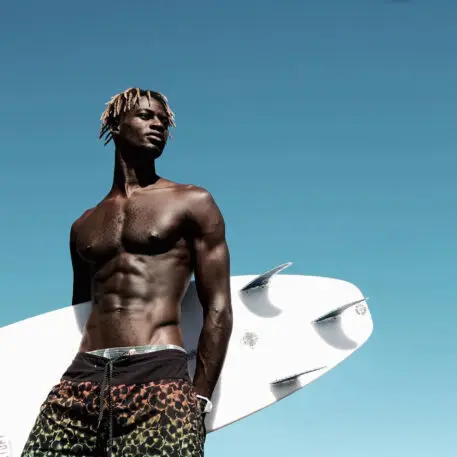
Bringing African surfing to the world
To help support local manufacturing, the Mami Wata team manufactured everything in Africa using African cotton. This also sets the brand apart from old school surf brands, which largely make their products in Asian factories. “We wanted to be different from those surf brands that are all telling the same story,” Dutton says. “We had a real opportunity to be purpose-led, rather than driven by profit, and to try to become a creative force for good in Africa.”
Over the past six year, Mami Wata has expanded beyond South Africa to the rest of the continent, and then to Europe. Now the brand in landing in the United States, where it will be available through the brand’s direct to consumer website and large retailers like Nordstrom. This growth will allow the company to invest further in its manufacturing. But importantly, it will allow the American market to get a different view of surfing. Hopefully, my daughter will grow up with different reference points than I did when it comes to surfing. She might be more inclined to pick up the sport when she sees images of people of all races cresting the waves on their colorful surfboards. “Diversity (in) the surfing landscape will continue to take place by telling new and exciting stories of what surfing looks and feels like across race, gender, body type…all of it,” Makesela says. “It’s pretty simple. If you can see it, you can be it.”
Mami Wata garments cost between $49.50 and $98.50, while surf boards start at $817.50. They can be purchased on the brand’s website.
Recognize your brand’s excellence by applying to this year’s Brands That Matter Awards before the early-rate deadline, May 3.
